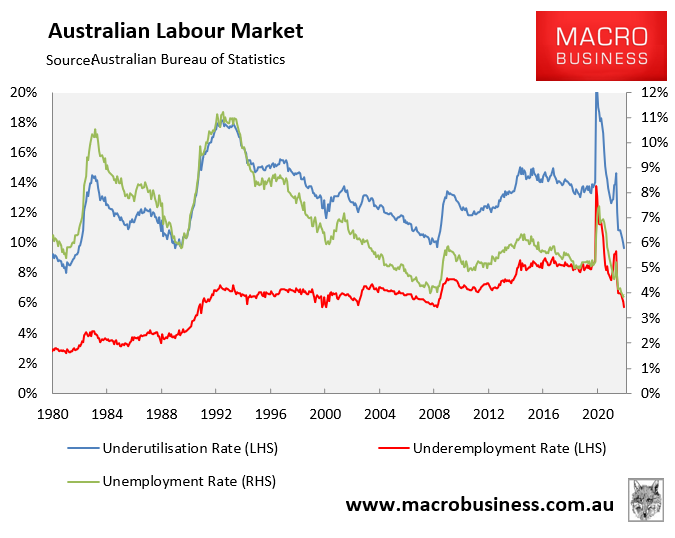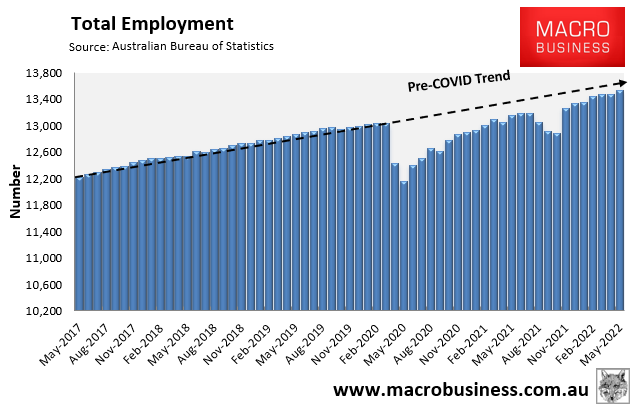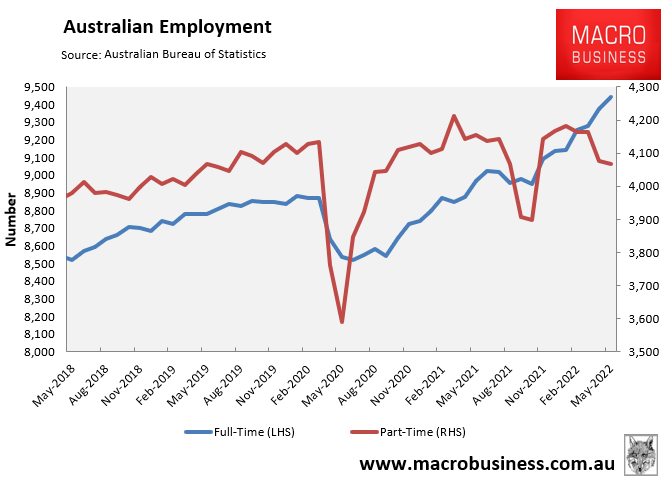Yesterday, the Australian Bureau of Statistics (ABS) released labour market data for May, which revealed that Australia’s unemployment rate (3.9%) remained at its lowest level since August 1974, whereas the underemployment rate (5.7%) fell to a fresh 14-year low. Labour underutilisation (i.e. unemployment and underemployment combined), fell to its lowest level since 1982:

While stimulus prevented the economy from sliding into a deep recession, it has merely filled the hole left by COVID lockdowns/restrictions and has failed to put the jobs market on a higher trajectory. This is illustrated clearly by the fact that employment growth is tracking below the pre-COVID trend:

However, full-time jobs are booming, up 6.4% over the pandemic versus a 1.5% fall in part-time jobs:


